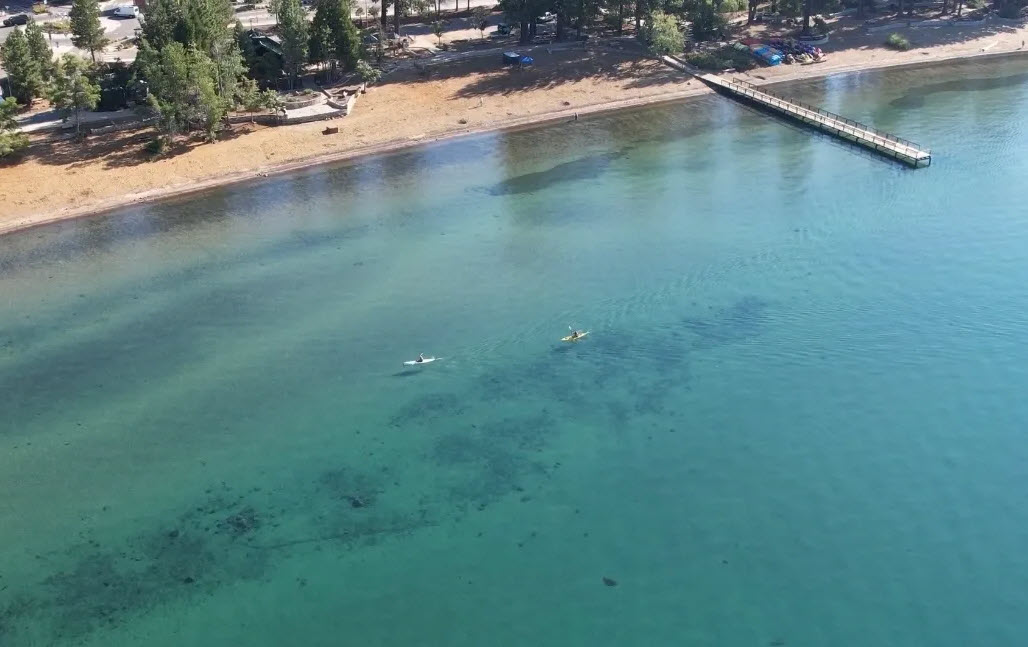
Nestled high in the Sierra Nevada Mountains, Lake Tahoe is renowned for its stunning beauty and crystal-clear waters. This iconic alpine lake, straddling the California-Nevada border, has fascinated and delighted visitors for generations. But what makes Lake Tahoe’s waters so incredibly clear, and what measures are in place to preserve this natural wonder?
The Depth and Size of Lake Tahoe
Lake Tahoe is the largest alpine lake in North America and the second-deepest lake in the United States, after Crater Lake in Oregon. The lake spans approximately 191 square miles, with a maximum depth of about 1,645 feet (501 meters). The lake’s great depth contributes to its exceptional clarity because deep, cold water helps preserve the water’s transparency. Additionally, its impressive size allows for the dilution of sediments and pollutants, contributing to its exceptional clarity.
Clarity Regulations and Environmental Stewardship
The remarkable clarity of Lake Tahoe’s waters hasn’t come about by chance. The surrounding communities and conservation organizations have taken significant steps to protect and preserve the lake. One of the key regulatory bodies in this endeavor is the Tahoe Regional Planning Agency (TRPA). The TRPA was established in 1969 to manage land-use and environmental issues in the Lake Tahoe Basin. Its main goal is to strike a balance between development and conservation, preserving the region’s unique natural beauty.
Some of the regulations and initiatives to maintain Lake Tahoe’s clarity include:
- Best Management Practices (BMPs): BMPs are guidelines and strategies designed to reduce the impact of urban development on the lake’s clarity. These practices include stormwater management, erosion control, and tree canopy preservation.
- Lake Clarity Monitoring: Regular monitoring of the lake’s clarity is conducted by agencies like the University of California, Davis, to track changes in water quality over time.
- Invasive Species Control: Invasive species like the Asian clam have the potential to disrupt the lake’s delicate ecosystem. Efforts are made to control and manage these threats.
- Watershed Restoration: The surrounding watershed is crucial to the lake’s health. Restoration projects aim to reduce sediment runoff and pollution from the land into the lake.
- Public Education and Outreach: Local communities and organizations work together to educate residents and visitors about responsible practices, such as limiting fertilizer use and proper waste disposal.
Comparing Lake Tahoe to Other Tourist Lake Destinations
Lake Tahoe stands out as a unique destination among other tourist lake locations. Its remarkable clarity and size make it a must-visit for travelers seeking a pristine natural environment. Here are a few comparisons to other popular tourist lake destinations:
- Clearwater Lake, Canada: While Clearwater Lake in Manitoba, Canada, boasts exceptionally clear waters, it is much smaller and less accessible than Lake Tahoe. The climate and amenities in the Tahoe area also make it a more attractive option for tourists.
- Lake Bled, Slovenia: Lake Bled in Slovenia is renowned for its stunning scenery, but its smaller size and location in a more developed region can lead to water quality concerns. Lake Tahoe’s strict regulations make it a more consistently clear destination.
- Crater Lake, Oregon: Crater Lake is famous for its deep, clear blue waters, but its extreme depth and lower average annual visitor numbers make it less accessible and a different experience than Lake Tahoe.
In conclusion, Lake Tahoe’s clarity is a result of its impressive depth, size, and the diligent efforts of regulatory agencies and conservation organizations. While other tourist lake destinations offer unique attractions, Lake Tahoe’s combination of natural beauty, stringent environmental protection measures, and diverse recreational opportunities set it apart as a truly exceptional destination for nature enthusiasts and outdoor adventurers. By preserving the crystal-clear waters of Lake Tahoe, we ensure that future generations can continue to appreciate the marvel of this alpine gem.